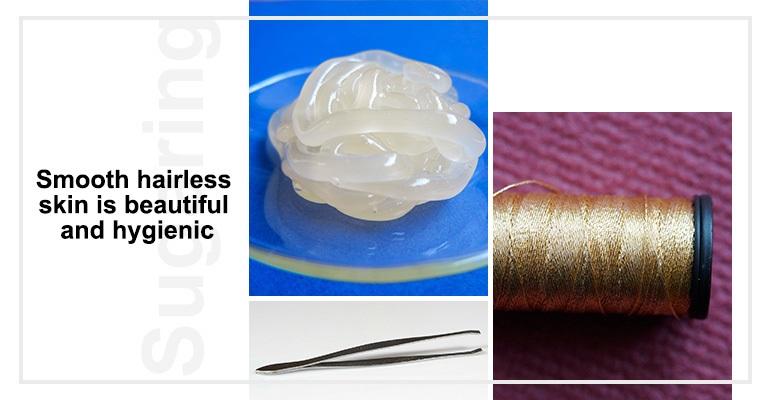
History of epilation
Hair removal from the body and face, on the first sight, seems like something contemporary, at least – last century innovation. In reality, according to reliable sources, archaeological and written findings, it becomes clear, that this tradition is over thousands or even tens of thousands years old.
Egypt
Exactly here, in Egypt, according to scientists, the main part of routine for today's women hygienic procedures was born, including epilation. Body hairs were supposed to be removed everywhere, except head, but even there, they often were getting rid of them, to be able to wear a special wigs. Scientists believe, that Egyptian women were doing it not for a beauty reasons, but mostly – for hygiene, protecting themselves from infections and parasites.
It is considered, that the most valuable contribution was made by one Egyptian princess, who invented a special composition for epilation, from mixture of wax, honey and herbs.
Hairs were removed, using shaving (special plates – prototype of modern razors), plucking (forceps) and resin.

Greece
There is no one single opinion. One group of scientists prove, that in Ancient Greece hair absence was considered ugly and was criticized. Other – just in opposite, insisting, that epilation was encouraged on the whole body surface, including intimate zones (in this way, they were emphasizing innocence, youth, and beauty).
Hairs were being removed, using forceps, bryonia infusion with a special hard sponge and fire.
Rome
From historical sources we know, that roman women were attending special rooms in public saunas, (similar to the modern beauty salons), where special slaves – cosmetologists were removing their hair with a twisted thread. Today this method of epilation is still popular in salons, for giving the eyebrows a perfect shape and extra facial hair removal. Brutality of this epilation method was smoothed by the fact that skin was soften up with steam, prior procedure, pores were opening and pain was not unbearable.
Hair were being removed, using forceps, creams, (similar to modern epilation creams) and resin (similar to waxing).
The Ancient East
Sumerians believed, that body hair removal – is a very risky process, that can turn away luck from those, who made gods angry. And Indians, Persians and Turks considered hair on a woman's body unattractive. Also, living in a hot climate, hair removal was more a necessity, hygienic element, that's why:
- Indians were epilating a whole body: both men and women.
- Persians invented a special epilation paste – from water, sugar, honey and herbs.
- Special strips for hair removal Turkey discovered at XIV century. And since XVI century Turkish women started to attend a special “epilation rooms” in hammams, later using honey and oils.
Hair were removed, using forceps, creams (similar to modern epilation-creams), sweet pastes (from sugar, honey and herbs).

Europe
In Middle Ages hair were removed with sharp objects, in other words shaved, soft fuzz was rolled out with a special bread-wax ball.
In times of Queen Elizabeth I, it became stylish to pluck hair on the forehead (enlarging the height of it) and eyebrows, meanwhile leaving the rest of the “Flora” on the body. After that, face was covered with mixture of chalk, (for achieving aristocratic paleness). In order to slow down the hair growth, a “wonderful elixir” made from frogs and bat's blood and ash was being used. To achieve the perfect smoothness of the face without single hair, they rubbed skin with nuts oil, or mixture of vinegar with cats urine, (they supposed ammonia would help to burn hair).
Hair were removed with a help of forceps, infusions (based on natural ingredients), sharp plates, mixtures (from honey, wax, flour).
Catherine de Medici, in time of Renaissance, took up arms against the epilation of bikini zone, (everything should look the way God created it). And in times of Queen Victoria, epilation was absolutely forgotten.
With innovation of the first dangerous razor at 1760, a new era of epilation history began.
Modern history
From the middle of XIX century, with innovation of the first cream-epilator, (1844) and a safe razor (1880), with a discovery of electricity and clothes getting shorter on top and bottom, art of epilation and depilation and its popularity, got a powerful impetus. After that, every ten years new ways of hair removal were discovered, making procedure easier, less painful and more effective .
Today woman's arsenal has a whole variety of methods: from simple (forceps, razor), to natural (sugaring, waxing) and modern (with a help of electric epilators, laser epilation, photo epilation).


 Cart
Cart 